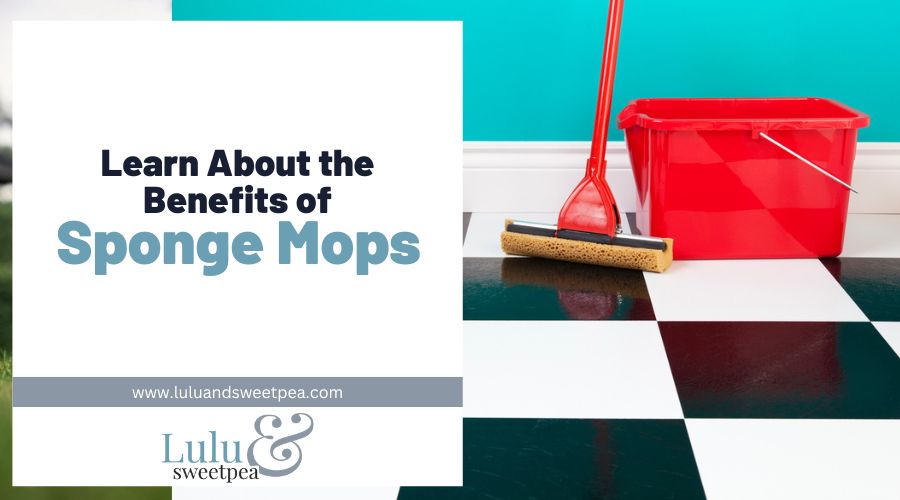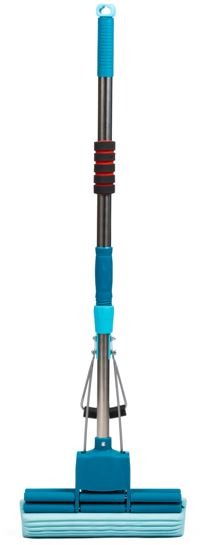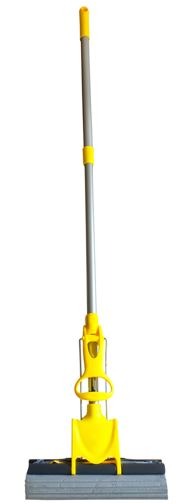Our houses are the most important investment of our lives since they are where we feel most secure and most at ease. If our living space is messy, we are less likely to feel at ease and more likely to experience feelings of irritation, confusion, and agitation. Returning home and cleaning those pesky dirt prints off the floor may keep you up at night.
A sponge mop can be a smart choice for easier cleaning of your floors. Sponge mops are highly absorbent and will not harm your flooring. They work well to remove dust, debris, spills, and food grains from any surface. With sponge mops, cleaning your house will be the least difficult chore you’ve ever experienced. Not convinced yet? Read on to learn about the types and benefits of sponge mops.
Types of Sponge Mops
Both synthetic and natural sponges are available. While their textures vary, they all serve the same purpose: thoroughly cleaning hard surfaces like floors. Microfiber is also used in other types of sponge mops.
Since the sponge is the mop’s central component and the sole cleaning means, choosing a sponge that suits your demands is crucial.
Polyvinyl alcohol and polyurethane are common synthetic materials, whereas cellulose is a natural substance used to make mops. The most frequent materials are synthetic since they are inexpensive, long-lasting, and simple to maintain. They can withstand high temperatures, making them suitable for use with boiling water.
Conversely, microfiber sponges are effortless yet effective cleansers. If you’re not a perfectionist and are in haste, the one with the microfiber sponge is the way to go. It’s effective with just water, so there’s no need for harsh detergents or other chemicals.
Sponge mops can have a microfiber or plastic mophead cover that can be removed for cleaning or polishing.
Flexible to any Floor Types
View this post on Instagram
The best way to clean your floor may not work on another’s. Thankfully, sponge mops are highly flexible and are a suitable type of mop for almost any kind of floor. Mopping with a sponge is the best way to clean vinyl and tile floors, which are resistant to water and scratches. Laminate and wood floors, which are more susceptible to moisture damage, can also be utilized with care.
A lot of water may be stored in a sponge mop since sponges are highly absorbent. Water might leak onto the floor during cleaning if the cloth is not thoroughly wrung dry. This is why they function best on water-resistant surfaces like vinyl, ceramic, or porcelain tiles.
You should squeeze as much water out of the sponge as possible on these surfaces before using it. If you press the sponge well, the water won’t seep into the grout or floor joints when you clean.
Although most sponge mops are mild, they may not be as tender as those made from microfiber. This means that flooring like marble and softwood, which are readily damaged, may not be the most superb option for these shoes.
Various Handle Options
One benefit of sponge mops is that it has various handle options like any other type of mop. The handles of sponge mops can be constructed of different kinds of materials, including steel, plastic, aluminum, wood, plastic, or a hybrid of these. Solid and long-lasting materials like steel and aluminum are frequently used.
The best mops have strong handles that can withstand some tension, which is necessary for a thorough cleaning. The mop may be more ergonomic and comfortable to handle by adding a grip made of rubber, plastic, or foam.
The sponge holder, wringer, and other attachments are frequently made of plastic. With its malleability, plastic is commonly utilized for ergonomic handles.
Adjustable Poles
Some sponge mops may be adjusted in height is an additional perk. An extendable handle makes using a sponge mop more convenient. Furthermore, it may be used for a wider variety of cleaning tasks, such as washing the walls of the bathroom shower. They may also be folded down in length to save space.
Mop handles that can be adjusted feature either a single pole with a locking mechanism or multiple poles that snap together. The height of adjustable poles is often altered by twisting the rod itself. Simpler in design, multipiece poles have many handle sections that simply screw together. You may add or remove a handle component to adjust the pole’s overall length.
Lightweight and Portability
View this post on Instagram
Sponge mops are lightweight and portable to use, which is a major plus. Even when completely soaked, sponge mops are lighter than cotton string mops. They don’t require a bulky tank of cleaning solution or complicated electrical components. You can easily carry and move them around because of their light.
Round vs. Flat Sponge Heads
Most sponge mops have heads fixed to a certain angle and position, which is inconvenient. While a fixed mophead is helpful for vigorous scrubbing, it can be problematic when cleaning tight spaces. Sponge heads, in particular, because of their roundness and stiffness, may have difficulty reaching corners and other hard-to-reach locations. Another drawback of these sponges is their thickness, making cleaning beneath furniture challenging. More scrubbing angles are possible, though, because of their spherical shape.
Flat sponge heads are often narrower and lower to the ground when scrubbing. They work best for scrubbing at an angle since they are flat. They’re more convenient than round sponge heads because their rectangular corners allow easier access to tight spaces.
Wringer Feature
Nobody enjoys getting their hands dirty by wringing out a used mop. Sponge mops, thankfully, can be wrung out without using your hands.
In addition, a sponge mop’s wringer is an essential accessory. The need for an efficient wringer becomes apparent when considering that too much moisture might harm some flooring. The mophead should be nearly dry after being wrung out by a quality wringer, allowing it to be used on various flooring types.
Many sponge mops have a wringer switch on the handle or the mophead itself. Thanks to the handle, the mop may be wrung without ever touching the sponge. Water may be extracted from a sponge in several ways, including by rolling over the sponge or applying pressure to the sponge. It won’t take as much force to wring out a soft sponge as a firm one.
Other Beneficial Features of a Sponge Mop
Finding sponge mops with different modifications designed to improve cleaning performance is possible. Scrubbing brushes can be included in addition to the sponge head for removing tough, embedded dirt and grime. Spill containment rubber squeegees may also be included in specific kits.
Compared to other, more compact cleaning items, mops might be a pain to keep. The mop may be hung on a hook behind a door or wall. This will keep it out of the way and vertically stored.
Many sponge mops contain washable mopheads that may be swapped out after extensive use. The design of this mop makes it such that just the sponge has to be replaced when it becomes filthy or broken.


